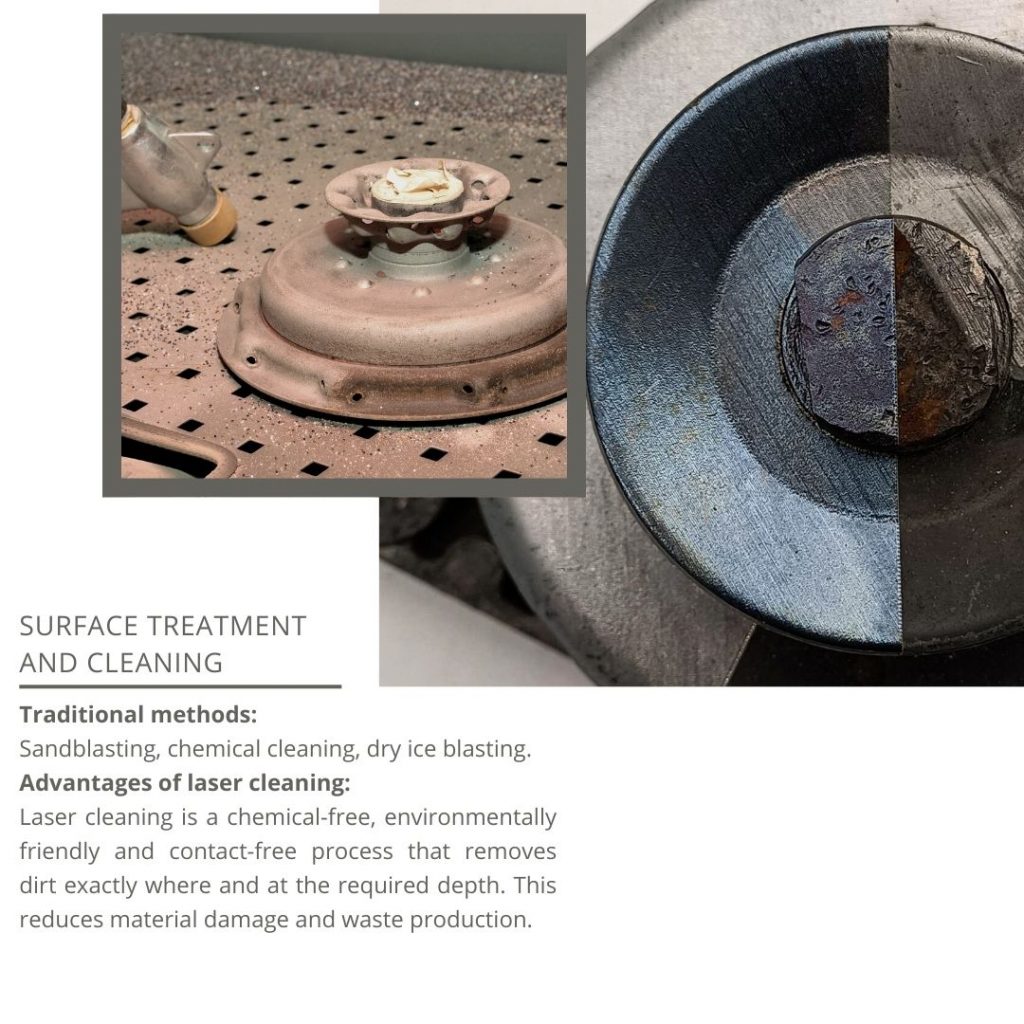
Cutting

Traditional methods:
Mechanical cutting (e.g. sawing, scissor cutting), water jet cutting, plasma cutting.
Advantages of laser cutting:
Laser cutting is much more precise, enabling the accurate cutting of complex shapes and fine details with minimal loss of material. In addition, laser cutting is faster and can handle different materials (metal, plastic, wood, etc.) equally efficiently.
Welding

Traditional methods:
Arc welding, gas welding, spot welding.
Advantages of laser welding:
Laser welding enables high precision and minimal heat input welding, which reduces deformations and thermal damage. The speed of welding can also be significantly increased by using a laser.
Milling and Material Removal

Traditional methods:
Mechanical milling, chipping.
Advantages of laser milling:
Laser milling is non-contact, so there is no tool wear, which requires longer service life and less maintenance. Material removal is carried out with high precision, which is especially useful for micromachining.
Surface Treatment and Cleaning

Traditional methods:
Sandblasting, chemical cleaning, dry ice blasting.
Advantages of laser cleaning:
Laser cleaning is a chemical-free, environmentally friendly and contact-free process that removes dirt exactly where and at the required depth. This reduces material damage and waste production.
Marking technique

Traditional methods:
Labeling, dot marking, needle marking, pad printing, marking with paint.
Advantages of laser marking:
Laser marking is a timeless, wear-resistant and extremely detailed solution. It is environmentally friendly as no chemicals are needed and the markings are durable, so they are resistant to both physical and chemical effects.
Surface activation

Traditional methods:
Plasma treatment, treatment with chemicals.
Advantages of laser surface activation:
Laser surface activation enables precisely defined depth and intensity treatment. This method is environmentally friendly because it does not use chemicals and only touches the necessary surface, with minimal waste generation.

